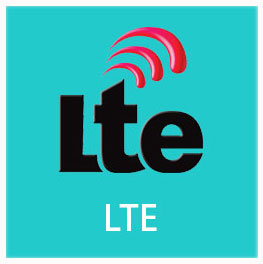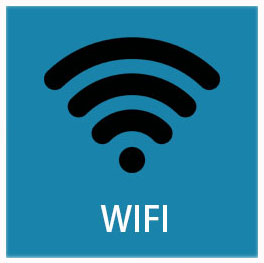Compare LTE and WiFi
LTE technology is 4G wireless network technology. LTE is built on the 3G High-Speed Downlink Packet Access network protocol and provides high-speed wireless mobile network connectivity through mobile computing devices. WiFi is a wireless technology that allows certain types of computing devices, including personal computers and cell phones, to connect to the wireless network through a router.
Basic information about LTE and WiFi
Released in 2008, LTE is technically designated as 3GPP technology and is designed to work with mobile computing devices, such as mobile phones and tablets. At the time of publication, LTE technology is available on select phones, providing access to 4G networks.
WiFi technology appeared on the market in 1999 with the release of the 802.11b standard, aimed at providing wireless networking functionality to computers and mobile devices. Unlike LTE technology, WiFi standards require a router to provide wireless network connectivity.
 LTE
LTE
Different versions of LTE and WiFi
At the time of publication, LTE technology was available in various release versions, including Release 12, which is the current version of the technology. WiFi protocols include the standards 802.11a, 802.11b, 802.11g and 802.11n .
The LTE standards are created by the collaborative efforts of electronics manufacturers and wireless service providers, including Samsung, Sony, AT&T and T-Mobile. WiFi standards are built on specifications established by the Wi-Fi Alliance, an international organization comprised of several similar companies under the 3GPP.
Speed and range
LTE technology provides data transfer rates from 100 megabits per second to 1 gigabit per second. The WiFi standards transmit data from 11Mbps to 600Mbps. A variety of conditions and situations can cause these speeds to change, such as bad weather, network traffic, and individual device capabilities.
The LTE standard allows devices to be connected to a wide range of network coverage, usually nationwide. WiFi devices must be within 300 feet (approximately 92m) of the wireless router to maintain wireless network functionality.
 WIFI
WIFI
Some things to note
You can also use a mobile router to take advantage of LTE network connectivity. Mobile routers allow any computer device to connect to your wireless carrier's 4G network using WiFi technology on one end and LTE on the other.
WiMAX technology is built on 802.16 WiFi standard and extends WiFi type wireless connection from 300 feet up to 30 miles. WiMAX is classified as an LTE technology, but it relies on a WiMAX-enabled router to connect to instead of a wireless carrier's 4G network.
- Data Center Network Security | Next Generation Firewall
- Help Protect Your Digital Assets Against Cyber Threats Network Security
- Network Security Software | Search Learn more Security NET
- Spam filter, Antivirus software, Proxy server | Network access control (NAC)
- Review and analysis Managed Application Support Services for AWS
Operate and exploit advertising by iCOMM Vietnam Media and Technology Joint Stock Company.
Adress: 99 Nguyen Tat Thanh, To 2, Khu 6, Thi tran Tan Phu, Tan Phu, Dong Nai.
Email: phuongtran2191@gmail.com | Tel: (+84) 984654960
Editor in chief: Tran Nha Phuong
Company: Lucie Guillot (Nha Phuong Tran)




